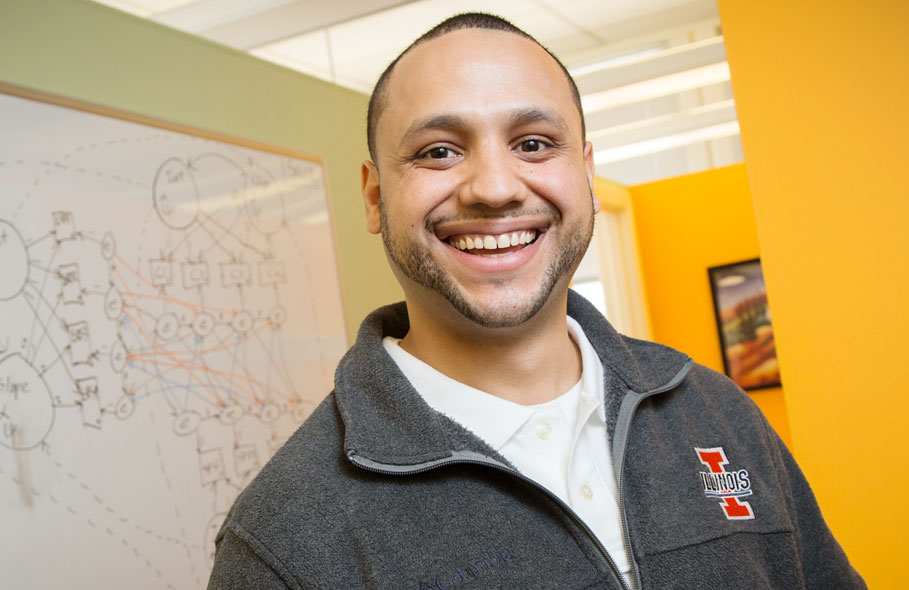Student’s hardscrabble past sparks research on delinquency and youth gangs
by Sharita Forrest / Jan 21, 2016

The allure of street gangs is something Gabriel “Joey” Merrin knows firsthand, having grown up in low-income neighborhoods in inner-city Chicago that are notorious for gang violence, crime and poverty. For youths living in these hardscrabble surroundings, “It’s not a question of if, it’s a question of when you’ll be faced with an offer or pressure to join a gang,” said Merrin, who affiliated with a neighborhood gang for part of his youth.
Currently a doctoral candidate in Child Development in the Department of Educational Psychology, where his research focus is delinquency and youth gangs, Merrin also is the lead author of a recently published study that examined the individual, peer, family, school, and neighborhood factors associated with young people who resist the magnetic pull of street gangs.
Merrin transferred into Educational Psychology and began working with Dorothy Espelage on her research into bullying and youth violence at schools in central Illinois and Wisconsin. Merrin also has led interventions with gang-involved youths at the schools and mediated conflicts between youth at the Champaign County Juvenile Detention Center.
“I have a perspective that’s a little bit different from some people, and I can relate to some of the students and speak to them in their own language,” Merrin said. “I try to have a dialogue with them, listen to them, learn their truths without judgment, and offer some suggestions that worked for me when I was facing similar situations.
“It helps when someone that looks like them with similar lived experiences is standing there and saying, ‘Look, regardless of your current situation, there’s still light at the end of the tunnel. You can still engage in education, get out of the gang, and have a productive, high-quality life,’” Merrin said.
Read the full article by Sharita Forrest of the Illinois News Bureau.